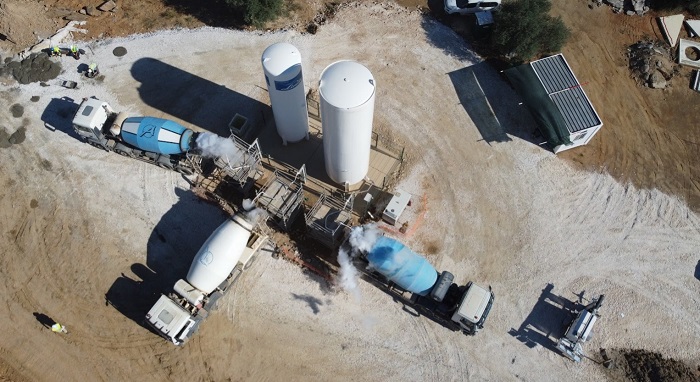Sacyr Engineering and Infrastructures started the construction of the railway line “Linha Évora- Tramo Elvas-Alandroal” in Portugal through Sacyr Somague.
This project includes a total length of 39,7 km, of which 6.2 km are in viaducts.
The construction of this railway line entails multiple relevant milestones from a structural and innovation standpoint, due to contract requirements. One of the principal peculiarities is that Sacyr has used a cooling process for cement for the first time.
This was since we cannot exceed a temperature of 65 ºC in the hardening stage of cement. This factor is enhanced due to the type of decks (solid slab 2.4 m thick) and type of concrete HA-40) and the temperature conditions in the project’s location, which in the summer can exceed 40 ºC.

To lay the concrete in accordance with the client’s requirements, we have taken the following measures: pouring the concrete at night, installing a chiller, and using liquid nitrogen to cool down the concrete.
"We have learned to adapt to the environmental conditions to obtain the best possible results", Pablo Castro, Production of Structures Manager at Sacyr Somague.
The process consists of directing the concrete buckets to cooling facilities installed in strategic locations.
Once there, a spear goes into the bucket, and depending on the original temperature of the concrete, the spar remains from 10 to 25 minutes pumping nitrogen inside the tank. As a rule of thumb, to cool the temperature down 1 ºC, requires 11.5 kg of nitrogen/ºc/m3 of concrete.

We are currently working on seven decks at a time, with different construction processes: three sets of falsework, one set of truss scaffolding, two movable scaffoldings, and voussoirs using the balanced cantilever method.
Our progress advances at a pace of 18 individual bridge spans a month, which equals 590 m.
Apart from the decks, we are also working on 250 m of piles per month of a total 3.2 km, 14 overpasses, and 11 underpasses.